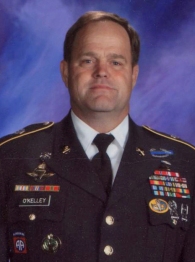Part two of our Q&A session with Patrick O’Kelley.
How did infantry tactics evolve during the war?
The British realized, before the war started, that they would not be able to fight in America with their European tactics. They went from three ranks (one kneeling) to two ranks, so that they could move faster. I already mentioned that the British would move fast during a battle to close with the American army and push them away with the bayonet. Many battles were over with in less than half an hour due to this. Some battles there were only one or two shots fired, and then it was over.
The Americans went from an army that could not even deploy onto a battlefield in a short period of time, to one that was able to take on the British using the bayonet. The Americans went from an army that had a large amount of civilian rifles in their ranks, to one that primarily used muskets and bayonets.
What are the differences between continental soldiers and militia?
Continentals were the full time soldiers. They enlisted for two to three years and were usually issued uniforms. They were the “regular” army and bore the brunt of the fighting. Militia were part time soldiers… they were the farmers, shopkeepers and such. You didn’t want to use them all the time because the country needed farmers and shopkeepers and such. They were used for short periods of time and their main job was not on the battlefield, but were used to police the countryside. They would guard depots, bridges, and do patrols to subdue or intimidate Loyalists.
When South Carolina fell and was occupied by the British, the militia became the partisans… the guerillas… and hit the British in their supply lines. In the South, in battle, they were used to slow down the British army, so that the Continentals could finish off the British army.
What is an infantryman’s worse fear?
It doesn’t matter if it is a Legionnaire with Caesar, or a Ranger in Afghanistan, the worse fear is always the same. It is not dying, though that is huge concern. The biggest fear is to let down the men to your left and right or end up getting them killed for something you have done, or didn’t do.
What were the most renowned British and American regiments fielded during the Revolutionary war?
I could write several dozen pages on this question, since the war lasted eight years and covered the entire United States. There were hundreds of Regiments that were here, both from the Regular army and the militia or provincials.
However let’s narrow it down to the most renowned Infantry regiments fighting in the South, since you have already covered the artillery and cavalry from other interviews. On the British side there were the Guards who were considered the elite of the British army. No Guards regiment deployed over here, but volunteers came over and formed the Brigade of Guards, consisting of all three Guards Regiments. There was also the 71st Highlander Regiment, and the 33rd Regiment. All were renowned and when the Americans faced them, they knew they were going to put up a fight.
On the American side, in the South, there was Kirkwood’s Delaware’s. This was the survivors of the Delaware line that had been wiped out at Camden and was in every single major battle afterwards. Also on the American side you had the 1st Maryland, who learned how to fight in the first battles of the war, honed that skill with von Steuben at Valley Forge, then used all their knowledge in the battles in the South.
The “Super Bowl” of the Revolutionary War was when the British Guards faced the 1st Maryland at Guilford Courthouse. Both sides were equally deadly and experienced, and neither side budged. It finally took massive losses to make both sides back away from each other and call it a day.
In your opinion, what battles illustrated the most effective use of infantry movement and tactics?
Cowpens. The three line “defense in depth” worked so well that Greene used it in every single battle he fought afterwards. Guilford Courthouse, Hobkirk’s Hill, and Eutaw Springs all use this three line tactic. Add in the effective use of artillery and cavalry and the British would not be able to counter this tactic. The only thing that saved the British army was the British soldier, who, by the end of the war, was a highly motivated, well trained and experienced combat veteran.
Twistification thanks Patrick O’Kelley
Patrick is currently a Junior ROTC instructor in Sanford, North Carolina at Lee County High School. He is the author of the four volume series, “Nothing but Blood and Slaughter, the Revolutionary War in the Carolinas” and “Unwaried Patience and Fortitude, Francis Marion’s Orderly Book”.


Excellant information!